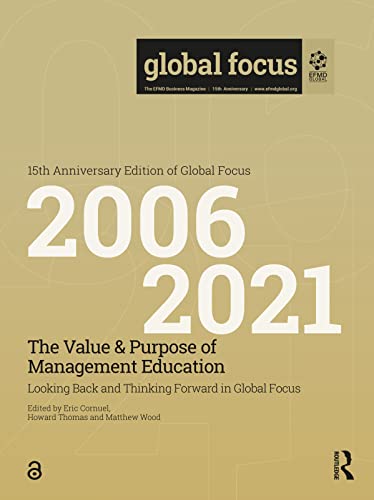

Most ebook files are in PDF format, so you can easily read them using various software such as Foxit Reader or directly on the Google Chrome browser.
Some ebook files are released by publishers in other formats such as .awz, .mobi, .epub, .fb2, etc. You may need to install specific software to read these formats on mobile/PC, such as Calibre.
Please read the tutorial at this link: https://ebookbell.com/faq
We offer FREE conversion to the popular formats you request; however, this may take some time. Therefore, right after payment, please email us, and we will try to provide the service as quickly as possible.
For some exceptional file formats or broken links (if any), please refrain from opening any disputes. Instead, email us first, and we will try to assist within a maximum of 6 hours.
EbookBell Team

4.7
26 reviewsWithout a doubt, business schools have been a success story in higher education over the last 50 years (the period of EFMD’s existence). Even so, they have come under scrutiny, and attack, over their academic legitimacy and value proposition for business and society. In this book, drawn from a special issue of Global Focus, the EFMD has selected around 25 of the best, most thoughtful short papers published in Global Focus to examine the role and purpose of EFMD in the evolution of management education.
Each of the chapters interpret current strategic debates about the evolution of business schools and their paradigms and also identify possible strategic options for handling uncertain, volatile futures. These papers can be broadly categorized into four consistent themes: the first theme is concerned with the purpose and value proposition of management education; the second theme focuses on a perceived need for new business models and how to design and build them; the third theme addresses the question of the impact of the business school on business and society given the increasingly academic pursuits of business schools and their often weak links to the business community – the so-called rigour/relevance dilemma; and the fourth theme concerns how to ‘map’ and design business school futures in an increasingly volatile, uncertain, complex and ambiguous crisis-oriented environment.
This impressive collection of insights from business management leaders from across the globe is inspiring reading for higher education leaders, policy makers and business leaders seeking insight into the future of management education.
The Open Access version of this book, available at http://www.taylorfrancis.com, has been made available under a Creative Commons Attribution-Non Commercial-No Derivatives 4.0 license.